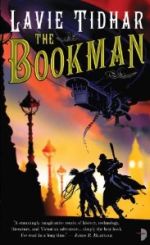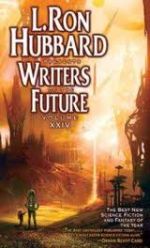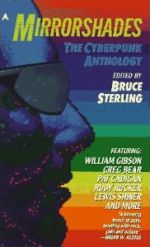Four from the Fourth Stone: A Mars Attack for April Fools
I played an April Fools’ joke on myself this year, without meaning to. I thought I’d pay homage to one of the greatest April Fools’ pranks of all time: Orson Welles’s Mercury Theatre production of H.G. Wells’s classic novel The War of the Worlds. In this 1938 radio broadcast, Welles moved the setting of Wells’s 1898 novel from England to New England, and presented it in the form of news broadcasts and interviews. Despite disclaimers and reminders that the broadcast was fictional, the program is legendary for causing widespread panic among the American populace. Depending on the estimate (Bartholomew 2001, Hand 2006), anywhere from a hundred thousand to nearly two million frightened listeners believed Martians had actually invaded Grover’s Mill, New Jersey.
Readers who have followed Redstone from the beginning will know what a big fan of Mars-related science fiction I am, starting with the Martian Tales of Edgar Rice Burroughs (see RSF#1). Given Mercury Theater’s glorious prank, I figured April Fools’ Day would be the perfect occasion for revisiting that fourth planet from the sun. So I set out to read and review as many Mars novels as I could this past month, starting with Wells’s seminal War of the Worlds, followed by another classic, Ray Bradbury’s 1950 Martian Chronicles, and then a couple of much more recent visits to our red neighbor, Kim Stanley Robinson’s 1993 Red Mars and John Varley’s 2003 Red Thunder.
Readers more knowledgeable than I will have already recognized my mistake. As I began gathering research and fact-checking, I discovered Mercury Theatre’s infamous radio play was really first broadcast not on April 1, as I had always thought, but on October 30, 1938, instead. You’d think I would have realized that, since Orson Welles ends the performance with a classic disclaimer (which to avoid mass hysteria should perhaps have been provided *much* earlier in the program), “Remember please for the next day or so the terrible lesson you learned tonight: that grinning, glowing, globular invader in your living room is an inhabitant of the pumpkin patch, and if your doorbell rings and nobody’s there, that was no Martian; it’s Halloween.” Since it was a Halloween prank, rather than an April Fools’ Day joke, the joke is now on me, since not only had I already read my Martian books for the month, I had already sent the title for this article to my editor. Faithful readers will please forgive my poor memory (see RSF#9) – though my editor may not.
Mercury Theatre condenses into one hour the events which take place over several days in H.G. Wells’s novel, and manages to include most of the novel’s basic elements using much of Wells’s original language: the mysterious cylinders, the tripod war machines, the heat rays, the black smoke, and the invaders’ ironic destruction when Earth’s own miniscule army infiltrates the Martian defenses. But what the radio play leaves out makes it well worth reading this classic of the genre. Like most great scifi, Wells’s War of the Worlds tells us more about men than Martians.
This does not mean War of the Worlds doesn’t have plenty of hard science; it does. Wells speculates rather advanced (for his time) scientific explanations for various phenomena. He explains how the invaders have evolved to be almost all brain, so that Martian anatomy (like the kaldanes of Edgar Rice Burroughs’s Mars) must rely on lesser creatures for digestion and other bodily functions. Principles behind Martian weapons such as the heat ray are also provided: “[I]n some way they are able to generate an intense heat in a chamber of practically absolute non-conductivity. This intense heat they project in a parallel beam against any object they choose, by means of a polished parabolic mirror, much as the parabolic mirror of a lighthouse projects a beam of light.” Even the Martians’ eventual defeat is foreshadowed by a quirk of Martian ecology.
But while he gives us the scifi trappings, Wells really uses the occasion of an invasion from Mars to show us just what we humans are made of. Some of it is noble and heroic. The narrator exhibits an Odsyssean determination and loyalty as he struggles to return to his wife. His brother chivalrously risks his life to assure the safety of two women he meets along the road. A naval vessel’s crew sacrifices themselves to allow refugee boats to escape. But Wells is also aware that there is a darker side to our species, and so a number of the Deadly Sins show their human faces. Avarice is illustrated by a refugee trying to escape the destruction with bags of hoarded gold. He is run over by a wagon and trampled by the fleeing mob when he stops in the crowded street to pick up coins. Sloth is represented by an artilleryman who has grand plans for fomenting an underground (literally) revolution against their unearthly conquerors, but spends his day playing cards and drinking instead of digging the tunnels he says will be necessary. And Despair, that deadliest of sins, is personified in the curate, whose faith has been so shaken that he is incapable of any action (except to eat up all of the rations of food, which also takes care of Gluttony). Even the narrator has his own heart of darkness: in an act of desperate self-preservation, he causes the death of another human being and is racked with guilt afterwards. Our human triumphs and failings are nicely captured in this classic.
Ray Bradbury’s Martian Chronicles is another classic of the Martian subgenre, only in it we humans are the invaders and Mars is the victim. (Bradbury gives a nod to War of the Worlds, in that the way in which the Martians are eradicated in “And the Moon Be Still as Bright” echoes the method by which Wells’s invaders are vanquished.) In his introduction Bradbury self-describes it as a “book-of-stories-pretending-to-be-a-novel,” so it should appeal in particular to readers of Redstone’s short scifi. Each of Bradbury’s stories is perfectly capable of standing alone (several of them had been published separately), but I do recommend reading the stories in order, as there are some recurring characters, and the stories have a definite chronology (though Bradbury had to update that timeline in the 1997 edition, adding about 30 years to the dates he had originally assigned when real life finally began to catch up to his future history). All of the stories in this collection – even the half-pagers – are filled with that poetic, playful, hauntingly surreal imagery which is characteristic of all of Bradbury’s fiction – so much so that I would also describe it as a “book-of-poetry-pretending-to-be-prose.”
Bradbury also quibbles over whether the Chronicles should even be called Science Fiction (his capitals). He claims that only one of the stories in it actually “obeys the laws of technological physics.” (That story, “There Will Come Soft Rains,” in which the main character is a house, is my absolute favorite of the bunch, and let me just add that I am extremely upset that a certain textbook publisher removed it from the latest edition from which I teach.) I suppose he’s right in that these stories are not “hard” scifi; it’s mainly the fact that they are set on Mars that qualifies them at all. His Mars, after all, has a blue sky and a breathable (if thin) oxygen atmosphere, which Bradbury well knew was not the case on our red brother. So it’s really best described as a “book-of-slipstream-pretending-to-be-scifi,” written forty years before Bruce Sterling thought up the term “slipstream” (and I’m a little surprised not to find Bradbury on Sterling’s canonical “slipstream” list). But it doesn’t really matter if it counts as scifi or not, since like War of the Worlds (and other great scifi), The Martian Chronicles is not really about Martians, or even Mars, it’s about humans who happen to be on a slightly strange and surreal Mars.
As the people of Earth begin to colonize the Red Planet, they bring with them all of their old Earth customs and culture, and their virtues and vices become mirrored on Mars. Lust appears in “The Silent Towns”, in which the last man on Mars is desperately trying to find the last woman. (But be careful what you wish for.) Envy rear its head (and Lust again, too) in “Ylla,” about a husband who is jealous of her wife for dreaming of man from another planet. Pride and Anger show up in “And the Moon Be Still as Bright,” when astronauts, thinking themselves superior, carelessly disrespect the planet’s former inhabitants, and the anger this arouses has dire consequences. But the good side of humanity is also represented in the three Virtues. Faith is exemplified in “The Fire Balloons” (a story which didn’t make it into some earlier editions), as Father Peregrine hopes to convert the remaining Martians; Love is shown in “The Long Years,” as a man spends his last day on Mars with his family; and Hope is found in “The Million-Year Picnic,” which, after a series of pessimistic stories about the future of Earth (“The Off Season,” “Usher II,” “The Watchers,” and “There Will Come Soft Rains”), expresses a cautious optimism about the future of Mars and Mankind. But overall we tend to destroy things, as Jeff Spender points out in “And the Moon Be Still as Bright” when he says: “No matter how we touch Mars, we’ll never touch it. And then we’ll get mad at it, and you know what we’ll do? We’ll rip it up, rip the skin off, and change it to fit ourselves.”
This is exactly the premise of Kim Stanley Robinson’s novel Red Mars (the first in his Mars trilogy, including Green Mars and Blue Mars). If Martian Chronicles is slipstream at its best, the Nebula-winning Red Mars is the paragon of hard scifi. Like Bradbury, Robinson chronicles the colonization of Mars, from the voyage out through settlement, society-building, and war, but Robinson, unlike Bradbury, gives details of ship design, hazards of interplanetary travel, plausible terraforming methods, Martian geology (called “areology”), bioengineering, automated robotic construction, medical advances, space elevators, and more, bringing a verisimilitude to the red (and later green) world he has created.
Red Mars is chock full not only of hard science but also of hard politics. Frank Chalmers quotes Machiavelli as he manipulates the members of the “first hundred” in the original expedition, negotiates with governments back on Earth, and arranges a New World Order for this new world. American, Russian, Japanese, and Arab cultural differences provide a backdrop for an intricate web of intrigue, and Robinson provides a nicely balanced and sophisticated view of how each of the different cultures might change (and be changed) by Mars (and by each other). Governments must also forge agreements with transnational companies with annual incomes which dwarf that of most GNPs. Throughout the social and political philosophy is sprinkled, along with discussions and examples of how technological advances (such as a medical treatment which halts aging) may affect society.
By far the biggest political conflict in the novel is between the “Reds” and the “Greens”, which terms Robinson cleverly reappropriates from their normal Terran meanings. The Reds are not communists (not necessarily, anyway, though the first hundred, being a scientific expedition, each provide according to their ability and use according to their need without in the utopian vision of communism). The term Red instead comes from the idea that Mars’s natural ecology should not be tampered with. The Reds, led by Ann Clayborne, believe the Red Planet should stay Red, in its natural state, and are in favor of disturbing it only as much as is necessary for scientific study. The Greens are not environmentalists (at least not in the usual sense). Rather, they are the direct opposite. Instead of preserving Mars’s ecology as it is, the Greens, let mainly by the physicist Sax Russell, wish to terraform Mars, altering its environment for the benefit of humans. So while it’s set on Mars, Red Mars just as much about human society as it is about the fourth stone from the sun.
Robinson pays homage to both Wells and Bradbury in his work (and I’m not just talking about simply naming some of the first Martian settlements after those distinguished authors). For instance, many of the scientists on the expedition are extremely concerned about bringing Terran microorganisms to the planet, since such entities might eradicate any life that might be found there. And though Red Mars is clearly a novel, not a book-of-stories-pretending-to-be-one, Robinson follows Bradbury’s structure in breaking his work up into smaller segments, each from the point of view of a different character. He even connects them together with brief interludes of poetic meditations, something like what Bradbury in his introduction to the Chronicles calls “Martian pensées, Shakespeaerian ‘asides,’ wandering thoughts, long night visions, predawn half-dreams.” These interludes and switches in perspective keep Robinson’s monumental epic from being oppressively monolithic.
There are also more subtle references to Bradbury, whether consciously intended or not. For example, the love triangle between Frank, the head of the American colonists, and Maya, the head of the Russian colonists, and John Boone, the ‘First Man on Mars,’ is satisfyingly reminiscent of the similar relationships between Ylla, Mr. K, and the First Man on Mars in Bradbury’s “Ylla” (even down to replicating the resolution of that conflict). Michel Duval, the expedition’s psychiatrist, ironically finds himself going insane, much like Mr. Xxx does (or thinks he does) in Bradbury’s “The Earth Men.” The Reds and Greens also echo the earlier Chronicles. Bradbury’s Jeff Spender is willing to kill in order to preserve Mars as mankind found it, making him the prototype Red, and just in case the title of Bradbury’s “The Green Morning” doesn’t tip you off, Benjamin Driscoll, the ‘Johnny Appleseed’ of Bradbury’s Mars, is most definitely the ur-Green. When Earth consumes itself in war near the end of Robinson’s novel, the inhabitants of Mars declare themselves Martians and cut themselves loose (literally) from all traffic with the mother world, just like Robert in Bradbury’s “The Million-Year Picnic.”
John Varley’s more recent Red Thunder isn’t so much about colonizing Mars as it is about getting to it first. The Chinese and the Americans are in a race to the Red Planet, but the American mission hits unexpected trouble. A group of Florida down-and-outs, a forcibly retired alcoholic astronaut, and an idiot-savant engineer try to cobble together out of junkyard scrap a vehicle which can rescue the lost expedition and still reach Mars first. It made me wonder what would happen if B.A. Baracus had been in charge of building Salvage 1. Never underestimate the usefulness of duct tape, monster trucks, and abandoned railroad cars! But the voyage still wouldn’t be possible without the misfit team’s discovery of a radical new technology, the ‘Squeeze drive,’ which serves as both MacGuffin and unobtanium in the story. As unobtanium the ‘Squeezer’ provides an easy technological excuse for violating the laws of physics, making such a swift voyage possible. As a MacGuffin it provides a source for conflict, something which governments (and other factions) struggle over, so the team must use a number of paranoid tricks to keep it from falling into enemy hands (or rather, into anyone’s hands, since the Squeezer is that powerful and that dangerous). And it’s around that conflict that much of the political and very human drama unfolds.
All four of these stories reveal many of those things about ourselves and our society which we like to pretend could only occur on another planet. So remember please for the next day or so the lesson you learned today: If the doorbell rings and nobody’s there, that’s no Martian. It’s you.
Works Cited:
Bartholomew, Robert E. Little Green Men, Meowing Nuns and Head-Hunting Panics: A Study of Mass Psychogenic Illness and Social Delusion. Jefferson, North Carolina: MacFarland & Company, 2001.
Bradbury, Ray. The Martian Chronicles (updated and revised edition). New York: Avon, 1997.
Hand, Richard J. Terror on the Air!: Horror Radio in America, 1931–1952. Jefferson, North Carolina: MacFarland & Company, 2006.
Mercury Theatre On the Air (1938). The War of the Worlds. CBS radio broadcast aired 10/30/1938. Audio file available at http://www.mercurytheatre.info/ or as an Orson Welles On the Air podcast OW52 11/2/08 at http://relicradio.com.
Robinson, Kim Stanley. Red Mars. New York: Bantam Books, 1993.
Sterling, Bruce (1989). Slipstream. SF Eye #5 (July 1989). Article available at http://w2.eff.org/Misc/Publications/Bruce_Sterling/Catscan_columns/catscan.05.
Varley, John. Red Thunder. NewYork: Ace, 2003.
Wells, Herbert George. The War of the Worlds. 1898. Ebook available from Project Gutenberg at http://www.gutenberg.org/ebooks/36.
Henry Cribbs somehow managed to sneak his science-fiction poem about Schrödinger’s cat into the literary art journal Lake Effect, and has also published book reviews for Philosophical Psychology, Chicago Literary Review, and Black Warrior Review. He taught philosophy and creative writing at the University of South Carolina for several years, and now forces his high school English students to read Ray Bradbury. He currently serves on the editorial board for Nimrod International Journal of Prose and Poetry.
























1 comment
[…] Four from the Fourth Stone: A Mars Attack for April Fools by Henry […]